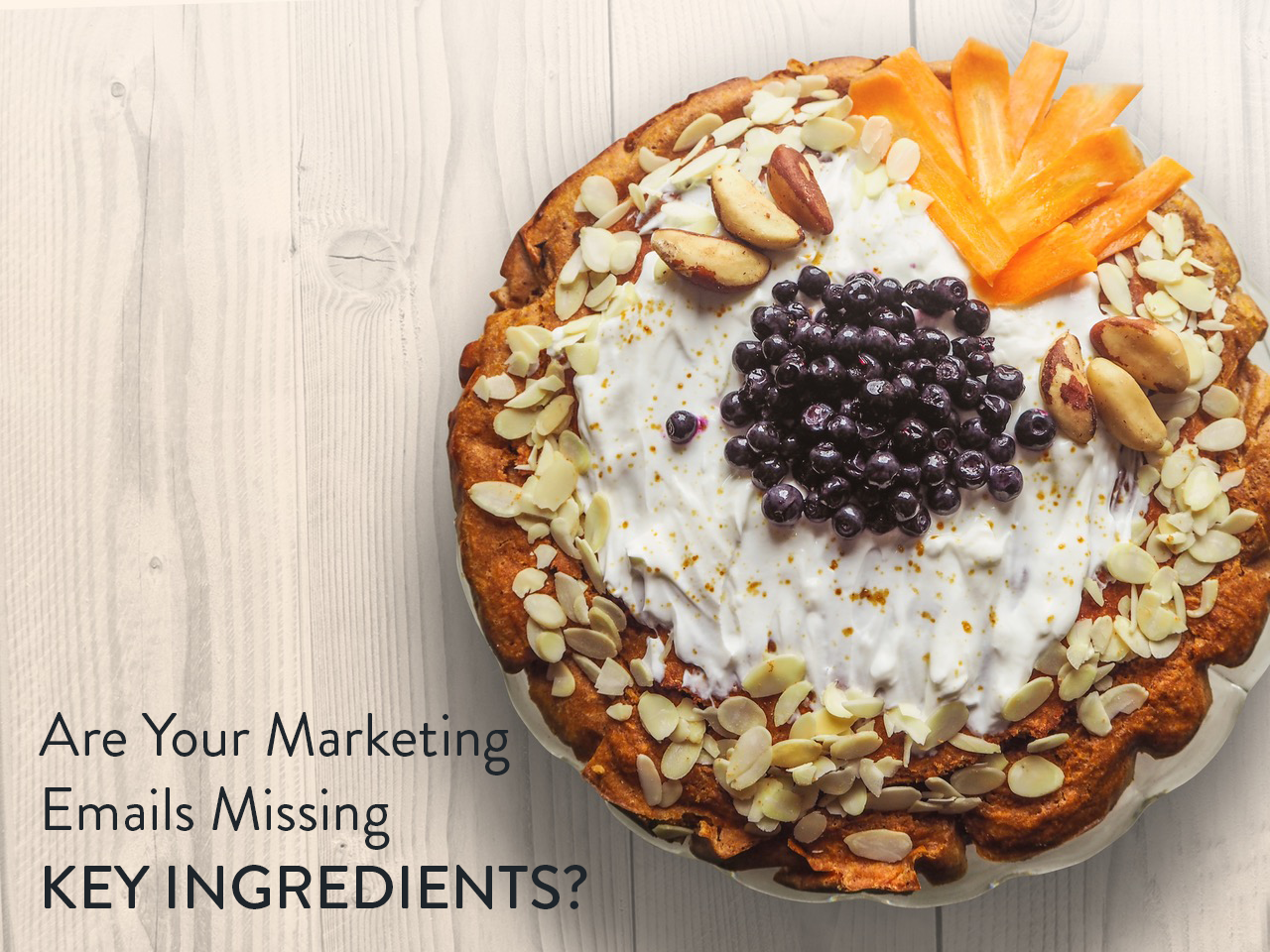Crafting the perfect email marketing strategy is like baking a cake: there’s a certain amount of artistry involved, a bit of panache and flair to add at the end (copywriting is basically fondant). But ultimately what determines the success of either is science. Baking is measurements, timing and chemistry, just as email marketing demands a measured, focused strategy.
Even the best marketers can lose sight of these four core email marketing pillars because their vanity metrics—open and click-through rates—could be strong.
But you can always dig deeper, boosting those numbers and discovering untapped revenue within pre-existing email lists.
So here are the key ingredients that any successful email marketer should use in 2017—consider these the flour, salt, sugar and water of the email marketing world. (Don’t worry, we’ll stop with the baking references for a bit; we’re getting hungry, too.)
INGREDIENT ONE: PERSONALIZATION
Maybe you already personalize every email to use your customers’ first names—that’s a good start. But personalizing emails is so much more.
Email personalization also means following up with customers based on their habits, rather than simply a generic schedule. This is where marketing automation can save you loads of time.
If you send someone a coupon and they haven’t redeemed it, you can trigger an email to them again as a reminder. If they bought something from you, you can follow up and ask how they’re enjoying it. Each email offers an opportunity not just for the initial message, but to add a bit of extra humanity into the transaction.
When you buy an online gift card from Sephora, for example, you get several emails—not just a receipt and confirmation it was sent, but also a notice when your giftee opened it.
It’s not an imperative email—Sephora could simply take your money and email you a receipt. But it adds a level of personalization to an otherwise faceless transaction. It also reminds you that you bought it (if your recipient opens the card a few days after you forgot you bought it), increases Sephora’s brand awareness in your mind, and makes them appear eager to make sure you’re accommodated every step of the way.
For small businesses, another way to personalize emails is to encourage replies to your emails and respond to everyone who does. The name of the game is communication, and it all starts with how committed you are to actually communicating with your subscribers.
INGREDIENT TWO: EXCLUSIVITY
If someone’s giving you their personal email address, you should reward that commitment. Offering exclusive deals, coupons or information to subscribers—in short, keeping the content unique and worthwhile—is the surest way to ensure people keep opening your emails.
Don’t recycle old offers, or pretend like what you offer to everyone is somehow special or unique. Don’t try and fool people. Simply offer something special to make them feel special, and reward them for signing up.
It’s easy to offer a one-time coupon for new subscribers and to make it time-sensitive to capitalize on the fact that your brand will still be fresh in their minds.
Offering early bird deals, first looks at new products or even just well wishes during holidays can all help your email customers feel a part of your club.
INGREDIENT THREE: CONSTANT SPLIT TESTING
We’re all about split testing, from subject lines to frequency and overall design, but A/B testing isn’t a one-off deal. You’ll never master it. Just as your subscriber list grows, so too will their preferences, and that means you’ll need to stay on top of what they want to see in their inboxes.
The idea is that you take something that works—say, a layout that generates a 20% click-through rate—and you make sure you’re on the right track by comparing it against a totally different layout. If your tried-and-true design comes out on top, you can now sleep easy knowing you’ve proven its worth with data. On the other hand, you may find something that works better.
You should be split testing your newsletter design every few months, trying out placements, colors and font sizes. It creates an environment of constant evolution that will keep your marketing emails fresh and engaging.
INGREDIENT FOUR: PURPOSE
If you don’t have a good reason to send out an email, don’t send it out. You should be crafting every email with a clear strategy, and that driving force should be apparent for anyone opening the email.
That purpose will influence everything else about your email, from the subject line to the design.
When the purpose is clear, it’s an easy decision for a customer to engage. The virtual wealth management company Wealthsimple sends out monthly emails detailing how your finances are doing:
It’s pretty clear what they want to tell you: your monthly statement is here. Click to view. It’s not a convoluted message, and it creates a clear route for engaged customers to continue interacting with Wealthsimple’s website and products.
Regardless of your own objectives, each email should contain a clear message driven by a goal you’ve determined for yourself. Like a company mission statement, it should loom over every business decision you make, ensuring that you’re always staying on the right track.
